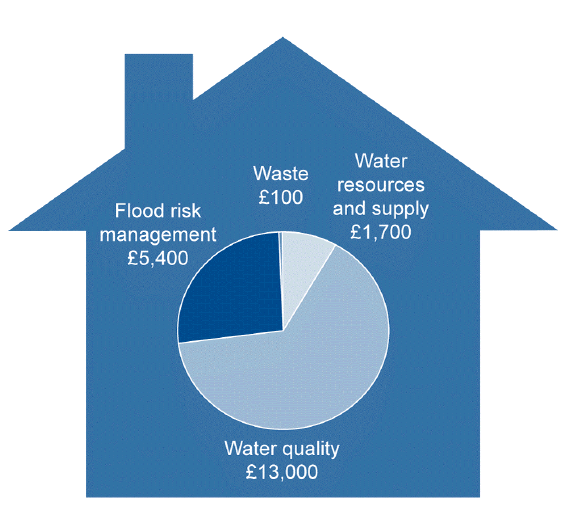Environmental infrastructure: what it could really cost
- Complaining about the Mainland - 17th August, 2024
- New island designation – is it just greenwash? - 26th April, 2024
- Police and Crime Commissioners – a solution or a problem? - 21st April, 2024
Drains, water, sewage works, landfill sites… usually best left to somebody else to sort out. Well, maybe once this was true. In south-east England nothing could be further from the truth today. It’s not always perceived as an obvious connection with countryside management but maybe it should be. The Ranger has always had a bit of an interest in sewage works, (see some photos of one of his recent visits to such an establishment) and is presently involved in advising his employer on drainage issues at a proposed large residential development site. So he read with enthusiasm the Environment Agency‘s 2007 report “Hidden infrastructure: the pressures on environmental infrastructure” because, let’s face it, you didn’t, did you? It’s a short report which is obviously designed to get some pretty stark messages home. It looks at how the environment is coming under pressure in densely populated areas, such as SE England, and argues that adequate environmental infrastructure is essential if development is to go ahead within the environment’s capacity to absorb the additional impacts. As well as looking at possible ways to reduce or mitigate these impacts, the report is bold enough to indicate the scale of the problem in simple terms:

Above is a figure from the report – it shows the calculated average environmental infrastructure cost, per house, in south-east England. The total is over £20,000 per house built.
This report was from 2007. The problem, however, still exists in 2013. Although some of the details have certainly changed the need for a solution is no less than it was then.
At present the government is looking at all sorts of measures – some controversially non-sustainable – to build houses. Adding a substantial levy on top of the price of a new house to pay for infrastructure isn’t likely to be high up their list of priorities. Reforms to the planning system in recent years have, if anything, had the opposite effect. Although supposedly making the complex system of levies and surcharges simpler, the new Community Infrastructure Levy has pushed the responsibility for such decision onto local authorities, who are in any case desperate to raise cash for all sorts of things, and also co-coincidently under great pressure to allow more housebuilding from central government. The net result is that local authorities are tempted to set such levies to meet immediate needs and not long-term strategic ones, and those monies that are collected might go on things that are politically popular such as schools and roads – not those things that traditionally get swept under the carpet such as sewage works and, dare I say, biodiversity. Our successors and descendants may not find this problem as easy to ignore.
We choose to power our economy with growth, and measure its success by how much it grows. The elusive goal of ‘sustainable growth’ is very hard to pin down – so often we slip into the easy simplicity of striving for ‘sustained growth’ – which is not the same thing at all. The Environment Agency figures are an unusually clear reminder of the future costs of growth that does not take into account the full price of development.
(First published in 2007, republished with updates in 2013. )


What I’d like to see is planning and building regulations which require new houses to have water collection and storage as
standard, both from each house and from the whole landscape. And of course water meters and a high charge for any water taken beyond the basic needs.
We also need education for gardeners. Some public gardeners have got the wildlife-friendly message, but almost none of them say that we can grow plants without adding tapwater = water taken from wildlife habitats.
Exactly!
About five years ago I was at a meeting about water infrastructure, and asked a local planning officer how all the proposed new houses (the planners were forced by national government to plan for them) would affect water supplies. He said that the local water company had told him they could supply the water, so that was all okay.
This is in an area where most catchments are ‘over-licensed’ or ‘over-abstracted’ = we’re taking too much water out of the ground = we’re trashing wilidlfie habitats, especially rivers and wetland.
And in an area where we’re already importing water from another area where most catchments are also ‘over-licensed’ or ‘over-abstracted’.